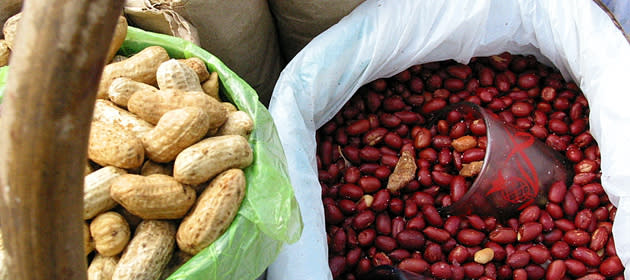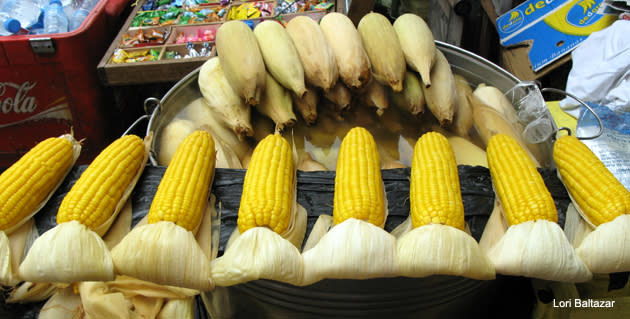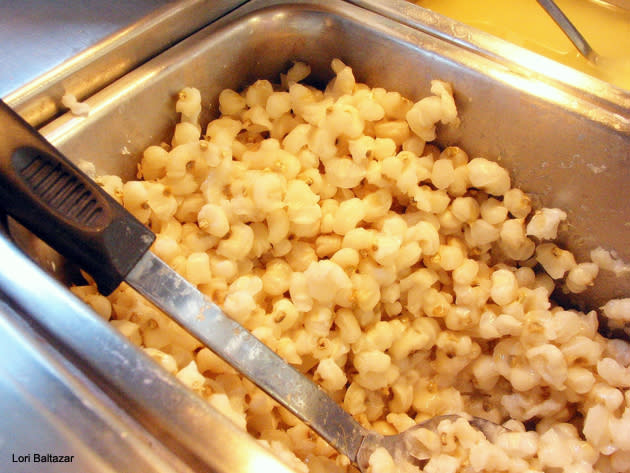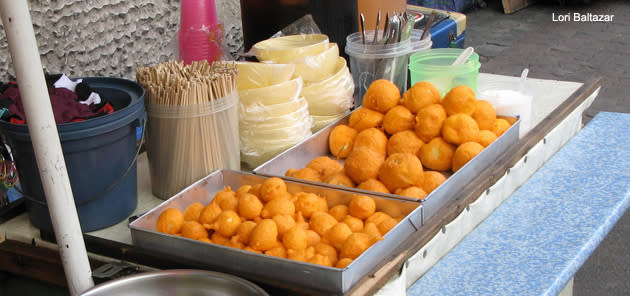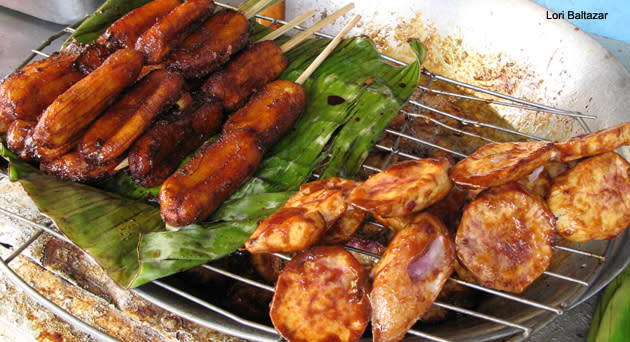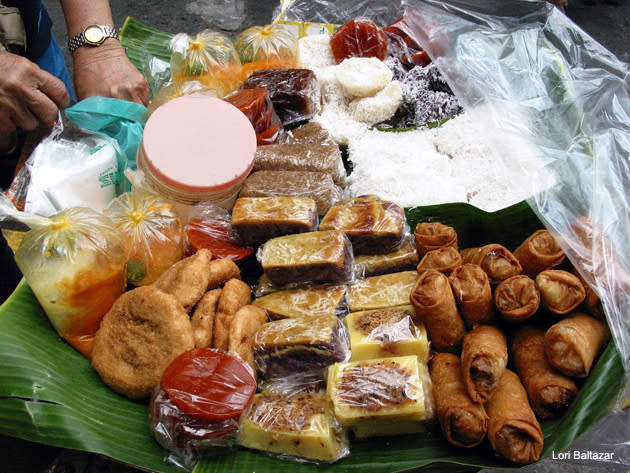Photo by Lori Baltazar
Philippine street food is a multi-colored spectrum of permutation and imagination. Filipino ingenuity is boundless and so is our appetite for portable food that demands to be satisfied with high flavor at a low price. Here, a (very) short list of street food commonly sold on Manila streets.
Corn (Mais)
One of the simplest is also one of the most sundry. Just boiled, steam escapes from its plastic cocoon, its fragrance at once familiar and sparking cravings. Grilled, the yellow or white corn is brandished with marks and burnished. Or fancier still if the vendor so fancies it as well, the corn can be shredded from its husk and seasoned with salt, smeared with butter (margarine, most likely), or stirred in with a cheap cheese mixture to make cheese corn.
There's also something called binatog. It's sold on the streets by itinerant vendors who make their presence known by knocking a piece of wood with a stick. The resultant sound is hollow and short. Binatog is a Laguna delicacy of boiled corn served warm and mixed in with grated coconut. It's made from native white corn which is stickier, mealier than the more common yellow variety. It's eaten with either salt or sugar and is exceedingly pleasing because of its chewiness and various textures.
Peanuts (Mani)
Most of the time, these peanuts are brought to bored people idling in their cars at the stoplight. Pushed around in a makeshift cart, peanuts are strangely satiating when eaten warm, the tongue puckering from the excess of salt. The peanuts can be boiled and sold still in their shells, or fried with lots of garlic chips.
Kwek-kwek and its clique
Perhaps the most vibrantly colored of all the street foods, this one also has the funniest name, triggering chuckles to the uninitiated. The basic version is kwek-kwek (also quek-quek): boiled quail eggs dredged in an orange batter and deep-fried. The color comes from tints of annatto powder, locally known as atsuete or pinulbos na atsuete. Kwek-kwek is eaten with lots of vinegar to offset its inherent greasiness.
For those with bigger appetites, there's the bigger, badder version called tokneneng (also tukneneng or tuknanay), hard-boiled chicken eggs prepared the same way. Other versions include hepalog, the balut or duck egg version, believe it or not.
The "-cues": Banana cue, Camote Cue and Turon
A motley of spellings here, from banana-q to banana-que, with or without the hyphen. I prefer to stick to my spelling above. Semantics and spelling aside however, this has to be the most-loved street food, cutting across all classes and biases.
Local plaintains or savory bananas, saba, are immersed in hot oil and brown sugar. The intense heat and sweet thoroughly coat the banana in a gleaming copper coat. One bite, gingerly taken, rewards the eater with shards of crackling sugar breaking away to reveal soft banana. It's endlessly satisfying and oh so cheap, all eaten on a stick. The same treatment is given to camote (also, kamote) and stuck on a stick, or French fry-style as in camote chips.
Turon is saba enclosed in an egg wrapper, sprinkled with sugar, and depending on availability and inclination, strips of langka (jackfruit). It's given another dredging in brown sugar and is then promptly dropped into hot oil. It emerges and is then sold upright in a tall container, edible soldiers for a sticky-sweet snack.
Kakanins
Kakanins are rice cakes, usually sold at markets in the morning or by roving vendors, usually women. They come in motley colors and shapes — rectangular and purple, white and round — all promising to sate hunger quickly and with the maximum carbo-load that we Filipinos crave.
source: yahoo ph



